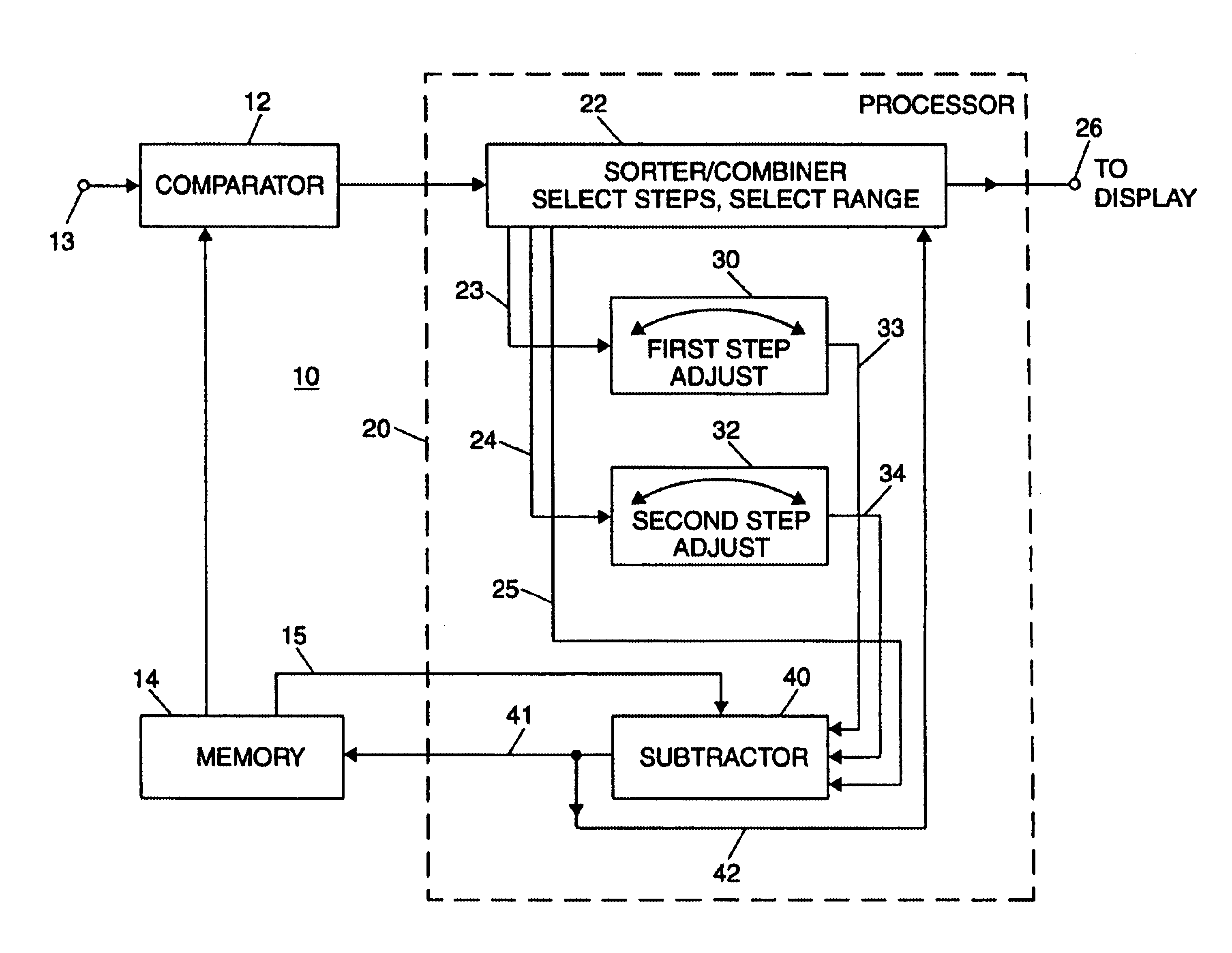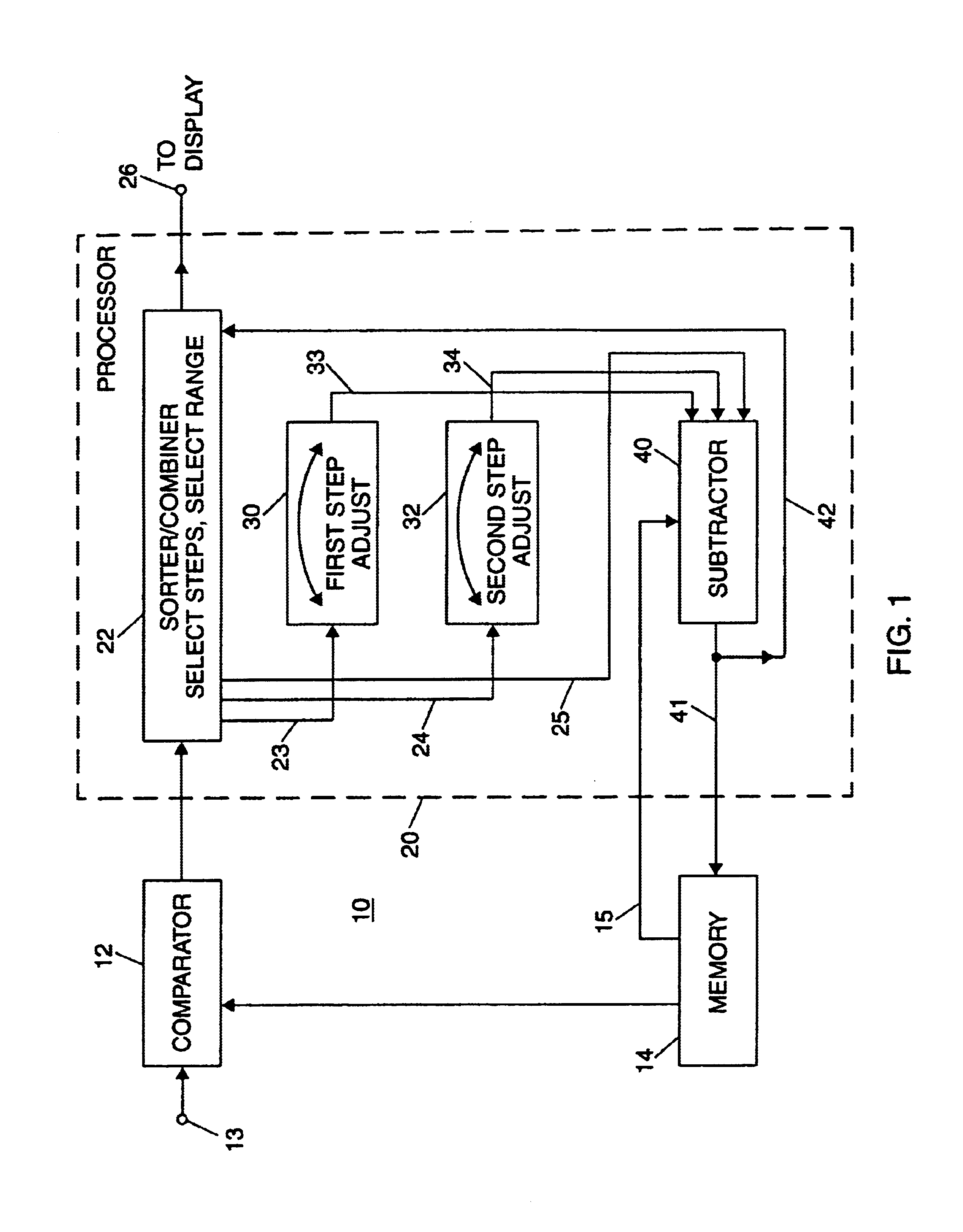Stepped-decay video morphing for liquid crystal displays
a liquid crystal display and video morphing technology, applied in the field of displays, can solve the problems of affecting the display effect or data, affecting the display effect, and affecting the display effect, and achieve the effect of decreasing the signal intensity
- Summary
- Abstract
- Description
- Claims
- Application Information
AI Technical Summary
Benefits of technology
Problems solved by technology
Method used
Image
Examples
Embodiment Construction
[0029]FIG. 1 illustrates an embodiment of a stepped-decay video morphing system 10, to modify video signals for use with a display (such as an LCD display) having disparate turn-on / turn-off characteristics. These characteristics may be represented by a faster turn-off time for a particular pixel position to transition from high intensity light output to low intensity light output, relative to a slower turn-on time to transition from low intensity to high intensity, for example. As shown, system 10 includes a comparator 12 to compare, on a pixel-by-pixel basis, signal intensity for a new image to signal intensity for a prior image. This is typically carried out on a frame-by-frame basis, even though image content may change less rapidly (e.g., a new image every four frames). More particularly, comparator 12 is arranged to compare, for a first pixel position, the signal intensity for a new image (termed “NEW” pixel intensity) to the signal intensity for a prior image (termed “OLD” pix...
PUM
 Login to View More
Login to View More Abstract
Description
Claims
Application Information
 Login to View More
Login to View More - R&D
- Intellectual Property
- Life Sciences
- Materials
- Tech Scout
- Unparalleled Data Quality
- Higher Quality Content
- 60% Fewer Hallucinations
Browse by: Latest US Patents, China's latest patents, Technical Efficacy Thesaurus, Application Domain, Technology Topic, Popular Technical Reports.
© 2025 PatSnap. All rights reserved.Legal|Privacy policy|Modern Slavery Act Transparency Statement|Sitemap|About US| Contact US: help@patsnap.com



